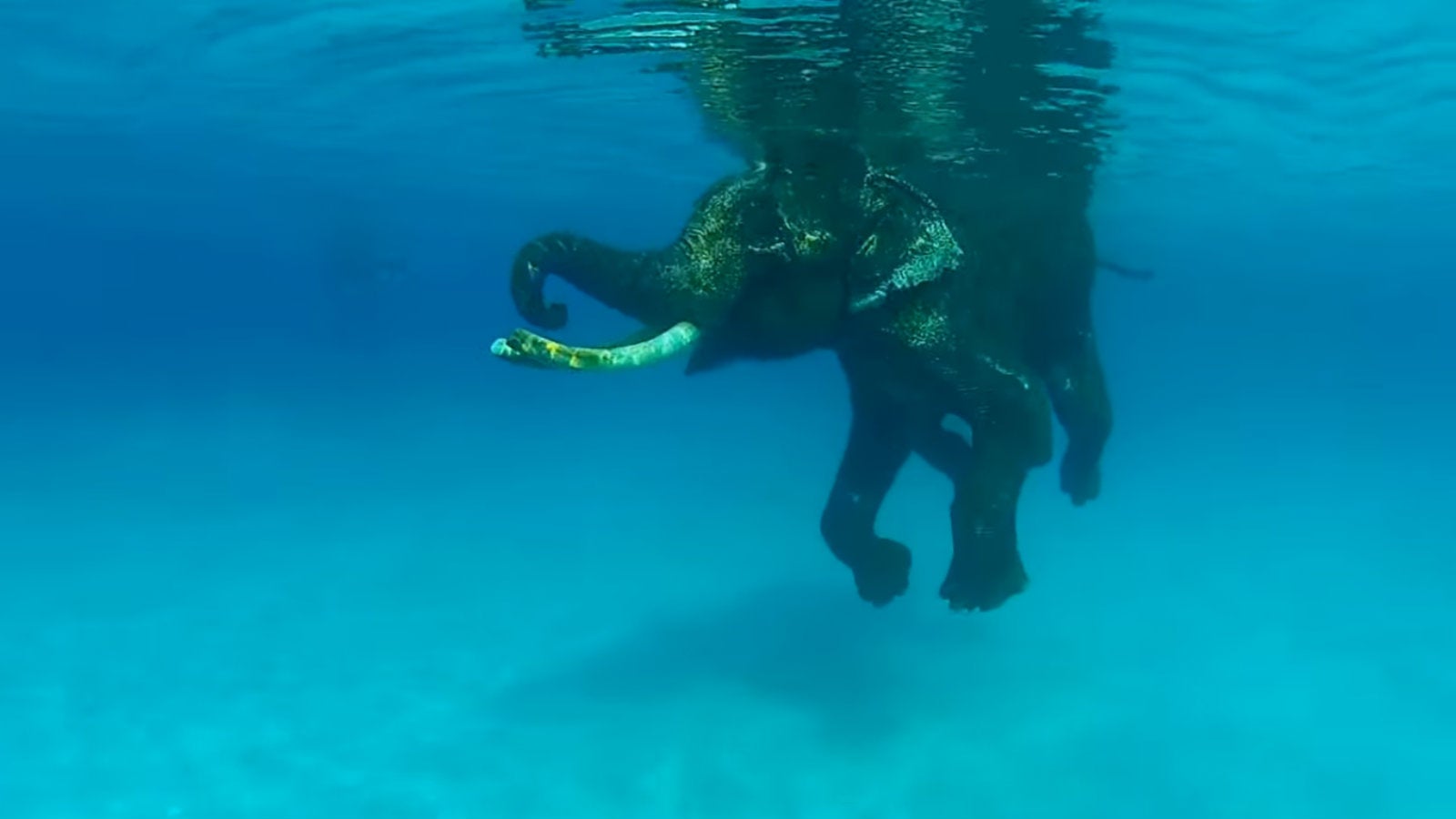The incredible life of India’s iconic swimming elephant
Andaman and Nicobar bid farewell to an iconic resident this week: Rajan, a 66-year-old swimming elephant and the last of his kind on the islands.


Andaman and Nicobar bid farewell to an iconic resident this week: Rajan, a 66-year-old swimming elephant and the last of his kind on the islands.
The talented tusker swam to fame in the 2006 Hollywood movie The Fall and was later adopted by the Barefoot Resort on Havelock Island where he lived until his death sometime in the intervening night of July 31 and Aug. 01. From 2007 to 2014, under the resort’s care, Rajan enthralled filmmakers and photographers from around the world as he propelled his 12-thousand-pound bulk through the ocean with surprisingly graceful gliding strokes.
But long before he became a YouTube sensation, Rajan began his journey as a swimming elephant in an entirely different industry, one rooted in the historical and economic evolution of the Andaman and Nicobar Islands.
The elephant economy
The islands, located in the eastern Bay of Bengal, are almost entirely covered by lush tropical rainforest and have nurtured a sizeable logging industry since the colonial era. The British were quick to note the commercial potential of the islands’ vast, verdant landscape and established a forest department in 1883, bringing elephants over from the mainland to help with timber extraction.
At the time, the limited infrastructure on the islands meant that the cheapest and most efficient way to get elephants from island to island was to make them swim. Thus, the swimming elephants of Andaman and Nicobar were born.
Elephants are expert swimmers by nature.
“They can swim and cross rivers without any problem,” Surendra Varma, senior scientist at the Bangalore-based Asian Nature Conservation Foundation, said. However, he noted that since most live in forested or mountainous areas, this skill isn’t really displayed to the extent it is in these islands.
In 1991, French scuba diving pioneer Jacques Cousteau immortalized the swimming elephants with his film ‘Andaman, les îles invisibles’ (Andaman: the invisible islands) and they went on to capture the imagination of divers and filmmakers for years to come.
But the situation changed in the year 2000 when the Indian supreme court banned logging on the islands to protect its biodiversity. Suddenly, the 200-odd elephants living in the Andamans were no longer in demand.
The result was a mass exodus.
“Between 2000 and 2007, every other privately-owned elephant was already shipped out to the mainland to some temple or the other,” Samit Sawhny, managing director at Barefoot Resorts, said. “Most of them died within a year or two.”
Fortunately, Rajan, who was relocated from the jungles of Karnataka in the 1970s, had a very different fate in store.
The making of a mascot
For many years after the logging ban, Rajan’s wealthy owner resisted calls to sell his elephant, making him the very last swimming elephant in the region. Rajan spent his days at ease, swimming in the ocean once a week and participating in the occasional film shoot.
After one such shoot in 2004, he was left stranded on Havelock. As his owner struggled to transport him elsewhere, Barefoot Resort stepped in to take care of the elephant.
Three years later, when a temple in the southern Indian state of Kerala offered his owner a sizable amount for Rajan, the resort decided to pay the eye-popping sum of around Rs25 lakhs to keep the now-beloved pachyderm.
From then on, Rajan earned his keep by swimming with a handful of photographers and filmmakers every year, cementing his status as the island’s celebrity. It wasn’t all work and no play, though, as Rajan balanced his swimming commitments with days spent roaming the forests.
“He would leave the resort very early in the morning and only come back after sunset, so he was a sight on the beach,” Sawhny said. “The entire island used to enjoy (seeing) him walking the length of the beach at sunset to get back home.”
By charging a premium, the resort was able to recoup the cost of adopting Rajan by 2014, and decided to retire the elephant from his swimming duties. Rajan ended his tenure in style, swimming with the crown prince of Dubai in March of that year.
And now in 2016 the world has finally seen the last of the swimming elephants. Rajan’s body lies deep within the forests of his adopted home where it will lay undisturbed after 66 years of a truly unconventional life.